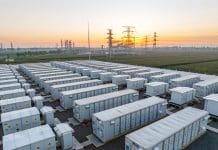Matt Bennion, CEO of Reds10, states that the construction industry must turn its focus to understand the full carbon impact of building lifecycles and explores how MMC can help
The construction industry has a fantastic opportunity. Not only does the built environment contribute approximately 40% of the UK’s total carbon footprint but yearly embodied carbon emissions in the construction process alone are now higher than the target issued by the Green Construction Board for 2050 for the entire real estate sector. That means that as an industry we can make one of the single most impactful contributions to the global effort to reduce carbon emissions and help delay or avert the looming climate emergency. That feels like an aim worth working for.
Government is doing its bit, setting ambitious net zero targets in the wake of COP26 and compelling companies bidding for public sector projects of £5 million or above to outline how they plan to limit carbon impact throughout the lifecycle of the project. This is in addition to government’s guidance in last year’s Construction Playbook, which outlined practices for how developments should be assessed and delivered, and which championed a ‘comply or explain’ policy.
Most recently, public sector procurement specialist SCAPE, in cooperation with some of the UK’s leading industry consultants and construction firms, urged the industry to transform how it views procurement in building and refurbishing public sector projects. The group calls for lifecycle carbon assessments to become mandatory and replace cost as the focus of decision-making. The proposal to place the procurement process within new statutory requirements adds a stronger level of accountability and is something that we at Reds10 wholeheartedly support.
These are great initiatives but there are some fundamental issues that need to be addressed if we are going to make a meaningful difference to decarbonising the industry.
Firstly, we need to gain clarity on the true carbon cost and footprint of material, design choices and new innovations – currently too much is left to supposition and word of mouth. Secondly, we need a balanced and data informed approach to the trial and assessment of innovative new low carbon materials, systems and technologies.
There are still roadblocks to gathering and analysing all the information needed to inform full understanding of the whole lifecycle, but it’s vital to harness and share this data from the outset – the design stage – where the key decisions affecting the future carbon implications of buildings are made.
Placing lifecycle assessment front & centre
With the right data, Whole Life Cycle Carbon Assessment (WLCA) can paint a reliable picture of assets’ carbon emissions – both during construction and in the ongoing running of the building until the end of its life. Often, analysis of embodied carbon and its effects is not at the top of the priority list but it certainly should be. According to the World Business Council for Sustainable Development, new builds can see 50% or more of emissions come from embodied carbon from just the construction phase.
The quality of the WLCA relies on accurate data and it is incumbent on designers, contractors, suppliers and developers to collaborate and use relevant data from the start to not only set realistic but challenging benchmarks but also to evaluate the relative carbon cost of different and innovative materials, systems and technologies. These conversations must happen as early as possible.
The challenge
The unfortunate reality is that reliable data is hard to find. The fragmented nature of traditional construction means that, where benchmarks exist, they are out of date, do not reflect current practices and/or are not validated by reliable data that has been harvested from real buildings during the operational phase. Equally, whilst product information is more readily available than in recent times, system performance data that is relevant to proposed building systems is rarely available at the front end of the project and unscientific assumptions are relied upon to inform decision making.
It is also true to say that it is difficult to get accurate data on new construction methods and materials – particularly ones that can be re-used. Steel is a good example – while the environmental benefits of timber are well known, we must also leave room for alternative materials.
The steel industry, with its past reputation for being carbon-heavy, gets a bad review on the basis of historical carbon data. Like many others, the steel industry has seen tremendous movement towards becoming greener as innovative technologies cultivate new, climate-friendly methods of steel production, the use of green hydrogen in production being one example.
There’s also increasing appetite in the construction space for recycled steel and, indeed, it has potential to be one of the world’s most sustainable materials, given its 100% recyclable nature. This opens the door to re-using the same materials again and again, while keeping their full original quality, once the lifecycle of a building ends but the data on these innovations is harder to find and too often they are discounted.
How MMC can help
The Construction Playbook noted that increased use of offsite manufacturing has the potential to bring not only more efficient, higher quality and safer projects – but also lower greenhouse emissions – than traditional construction.
Due to more meticulous and rigorous design, MMC can directly benefit the sustainability of projects in construction and the eventual operational performance of buildings. It makes it far simpler to control quality and all details in order to understand the total lifecycle carbon impact and see where there is room for improvement.
The process inherent in MMC includes standard detailing that is based on learning from previous projects, not least because the learning details are based on precise, accurate calculations. The quality that has evolved over the year of investment in this detailing has overcome some of the growing pains of modular construction and old perceptions are changing fast, particularly in the UK – the MMC industry is more ready than ever.
Contributing to government goals to “build back better, faster and greener”, modular construction projects can be completed up to 50% faster than others. Also, not only does this methodology use advanced digital innovations for higher quality buildings, it is also a more sustainable way to build, using an estimated 67% less energy than traditional construction.
The process and programmatic approach to MMC is however where it comes into its own on sustainability. This is particularly the case for vertically integrated MMC businesses like Reds10 who control the design, manufacturing, installation and operational phases of the project. The vertical integration makes MMC an ideal platform for trialling new materials and innovative technologies and analysing their actual performance in use. Data and learning can be harvested so that the sustainability criteria of every component can be measured and fed back into the building model at speed. This accurately informs carbon performance benchmarks and therefore low carbon design for future projects.
Reds10 is already successfully harnessing data from its existing offsite construction projects to deliver carbon negative projects, using SMART building technology that collects data on buildings’ performance via remote monitoring. The valuable insights generated by this data have been built into carbon calculators that inform the front end of design and help to suggest improvements to each design step, ultimately helping to achieve greater reductions in embodied carbon while maximising energy efficiency.
For instance, delivery of the £45m Net-Zero Carbon Accommodation Programme (NetCAP) for the Ministry of Defence used these calculators to reduce embodied carbon by 43% and informed low carbon design of systems so that buildings will be carbon negative operationally throughout their lifecycle.
Consequently, they have attained Defence Related Environmental Assessment Methodology (DREAM) ‘Excellent’ and Energy Performance Certificate (EPC) A+ ratings. Energy Usage Intensity data is now collected to include unregulated power and drive further improvements.
Technology, which is adopted to far greater levels in MMC is an important facilitator of a net zero industry and lifecycle assessment. It ensures robust cooperation across all parties involved in project delivery, as well as investment into innovations, to enable companies to gain the 360-degree visibility they need of the lifecycle of a building to make good decisions when it comes to materials and design. It can also automate carbon calculation. Having access to accurate and up-to-date data breaks down the siloes typically present in traditional delivery.
For the industry as a whole, reducing carbon emissions is central to responsible business conduct and, for that reason, we welcome the call for traditional public sector procurement transformation. True collaboration across the supply chain that is based on decision making informed by reliable carbon data is the only way to decarbonise the lifecycle of buildings, and secure a thriving future for the industry.
By playing to its strengths, the MMC industry can seize the opportunity and lead the much needed transformation.













